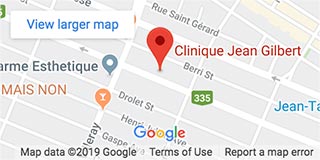
Are there effective treatments for brown spots on the skin?
With time, it’s common for brown spots, typically called “age spots”, to appear on the skin. You’ll usually see them on the face, neck, hands and upper part of the chest.
Why do age spots occur?
You’re probably wondering what causes these little brown spots. They’re actually the result of uneven production of melanin, a pigment produced by specialized skin cells called “melanocytes.” Melanin is produced in reaction to exposure to the sun and its role is to protect the skin. It’s the same pigment that’s responsible for your beautiful tan during the summer. But over the years, the skin gradually loses its ability to withstand the harmful effects of the sun’s ultraviolet rays. The result is hyperpigmentation, leading to the appearance of small brown spots on the skin.
When should you see a doctor?
While in general, brown spots shouldn’t be a cause for concern, it’s a different story if they change in color, size, shape or texture. It’s a simple matter of being vigilant, as a benign-looking spot could turn out to be a melanoma. Since only a physician can make that distinction, don’t hesitate to consult your doctor if you have any doubts.
An ounce of prevention…
While it’s true that age, genetics and hormonal fluctuations can all play a role in the appearance of age spots, a number of different lifestyle habits can also be contributing factors. The good news is that brown spots aren’t inevitable! There are certain precautions you can take that will help you maintain an even skin tone—to the extent that it’s possible, of course.
This is where the importance of protecting your skin from the rays of the sun comes into play. Sun protection is your shield against age spots! Since the sun is the main culprit for the appearance of brown spots, it’s recommendable to avoid it (especially between noon and 4:00 p.m.) or to provide your skin with added protection. To do this, use a high-quality sunscreen with an SPF (sun protection factor) of at least 30. The recommended degree of protection (SPF 30 or higher) will vary depending on your skin-type and the amount of exposure to the sun.
Are creams effective against age spots?
Sunscreen lotion will be extremely helpful in delaying and minimizing the appearance of spots, as well as protecting your skin against the kind of premature aging that can result from overexposure to the sun. However, if you already have age spots, you may benefit from targeted treatments like age spot correcting serums, depigmentation creams, skin lightening creams, etc. These products are effective at fading spots, but you should be aware that they’ll be even more effective if you combine them with other treatments.
Photorejuvenation and glycolic acid peels
Are you dissatisfied with the results of the methods you’ve been using so far? Clinique Jean Gilbert offers top-of-the-line treatments like facial photorejuvenation and glycolic acid peels.
Proven to be effective, photorejuvenation employs a high-intensity laser to improve the texture and tone of the skin, making it softer, firmer and more radiant. Laser treatments can be specifically targeted at problem areas as small as a single spot. Glycolic acid peels, on the other hand, provide deep exfoliation of the skin, reducing the severity of age spots and wrinkles, while evening out the texture of the skin.
To learn more about the treatments that are available at our clinic in Montreal, please don’t hesitate to contact us!





